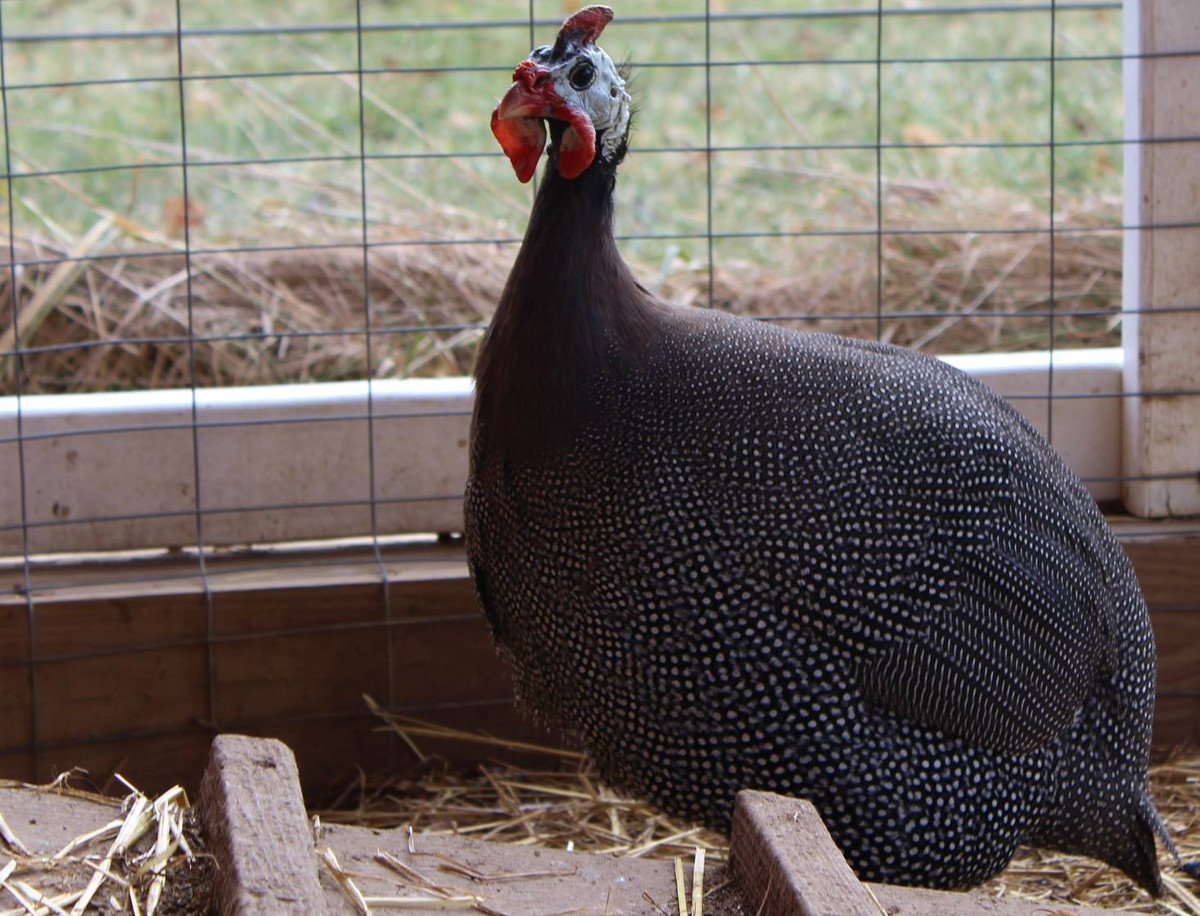Guinea fowl basic equipment list.

Cluckin.net is supported by its readers. When you purchase through links on our site, I may earn an affiliate commission.
As an Amazon affiliate, I earn from qualifying purchases.
Your Guineas have three basic needs:
- Secure, clean housing.
- Space.
- Food and water.
Below: Guineas can be rewarding.

Poultry keeping is as easy as you want to make it. Guinea fowl are outdoor birds living in open Savannah and roosting in trees. A simple common-sense approach is needed.
What equipment is necessary for the keeping of Guinea fowl:
The Guinea fowl coop:
A safe secure, dry place for your guineas to hide out and roost. Guinea fowl naturally roost up high and your choice of coop needs to reflect this. A tall shed with perches in the eaves will make for happier fowl.
The coop will need nest boxes although guinea prefer a depression in dry soil for nests.
See the Guinea fowl housing requirements.
Feeder for Guineas: Size depends on how many guineas you have got or are planning to get.
Metal or plastic is a personal choice but I do not use plastic feeders and never recommend them. In my experience Guinea fowl prefer to feed from a trough.
More on feeding Guineas.
Waterer for Guinea fowl: Again the size depends on the number of birds and the weather conditions. They will drink more in hot dry climates or if they are on dry or pelleted feed. I always recommend a galvanised steel trough for both the feed and water for Guineas.
The feed and a storage bin: I use a galvanised steel dustbin as it keeps everything out.
Grit with shell: Guinea fowl like chickens have no teeth and need to consume stones and calcium in the diet.
Bedding: I use builders sand on the floor of my guinea sheds. They are used to it as I use it for brooding bedding as well. Guinea are much more at home on a sand floor.
Dust bath: An area which is dry and sandy where the birds can have a dust bath.
Shovel: This is a pretty obvious piece of kit for any poultry keeper.
DE or Diatomaceous Earth: used to help prevent parasites on the birds and bugs in the food. Dusted on the Guineas, in the coops, nests and added to the dust bath.
Torch: It is the only way to catch and handle guinea fowl, after they have gone to roost. That means you will be working in the dark, so invest in a good-quality head torch so you have both hands free to deal with the Guineas.
Scissors: A Sturdy, sharp pair of scissors for cutting Guinea fowl flight feathers.
Cotton wool for cleaning various the birds.
Toenail clippers and nail file.
Leg rings: in a range of different colours and sizes means you can quickly and easily mark an individual bird. Useful if you are treating a sick bird or marking a pair for breeding.
Pliers and wire cutters.
Gloves. A sturdy leather pair is a must for surviving your encounter with a grumpy guinea and some disposable latex ones for sick or injured poultry.
Purple spray: Ideal for treating minor wounds to birds but can also double up as anti-feathering pecking spray in minor cases of plumage pulling. An antiseptic spray with the advantage of being visible.
Petroleum jelly can also be applied to the combs of birds during extremely cold weather to reduce the risk of frost bite and applied to dry patches of skin on the face or legs. It's also handy when treating for scaly leg mite but I have never seen this in Guinea fowl.
A carrier of your choice: Cat boxes for singles or pairs or chicken crates.
An incubator if you plan to use one: I have used many over the years and keep coming back to Rcom incubators.
A brooder and equipment: A safe and secure places that young guineas can't escape from.
